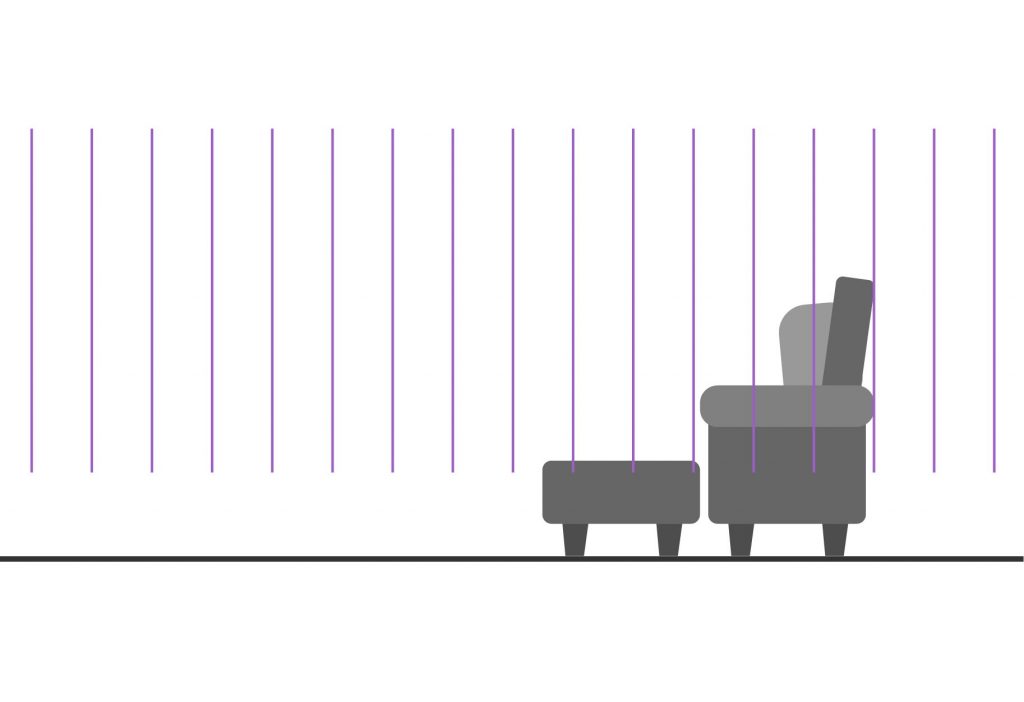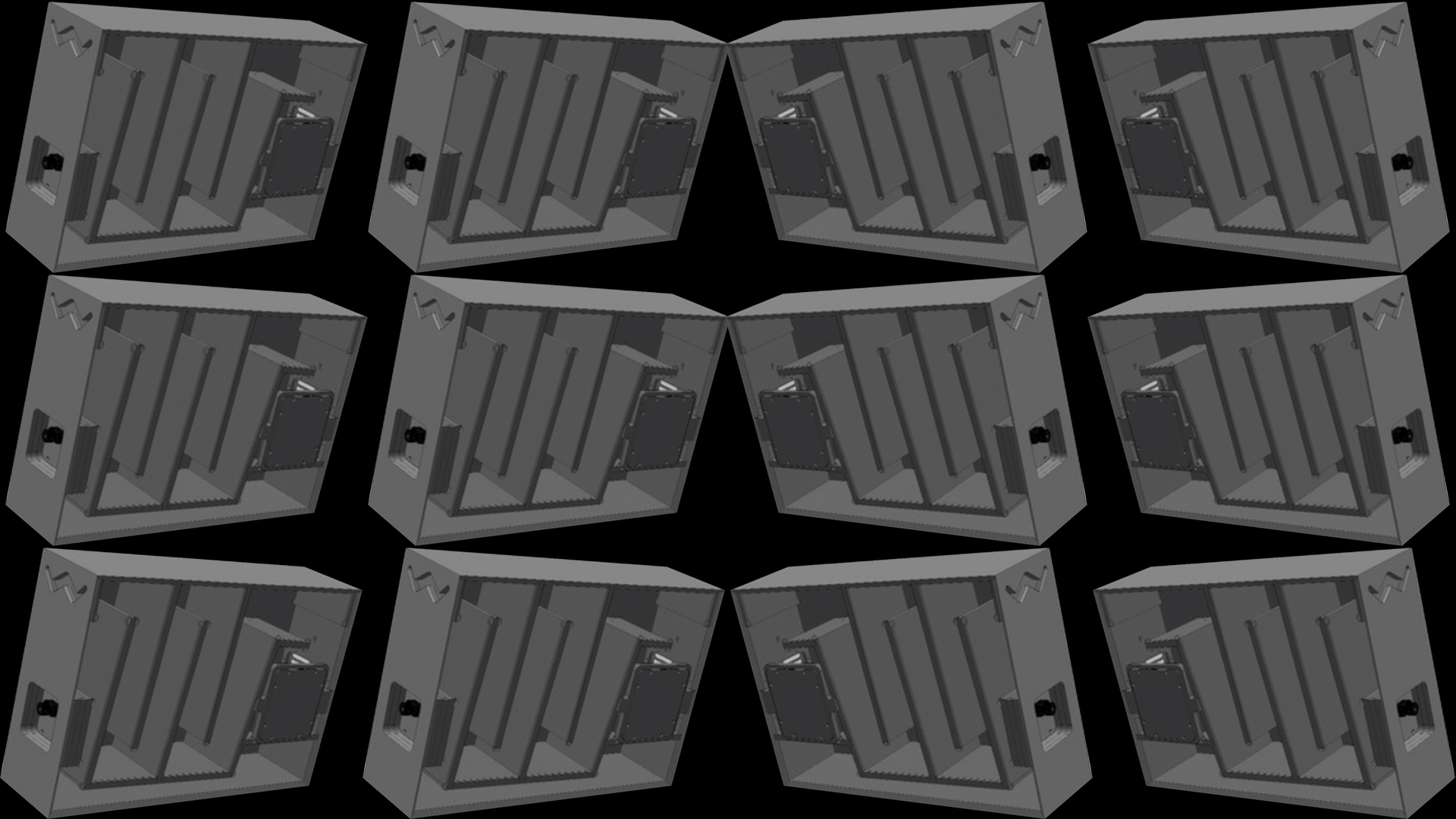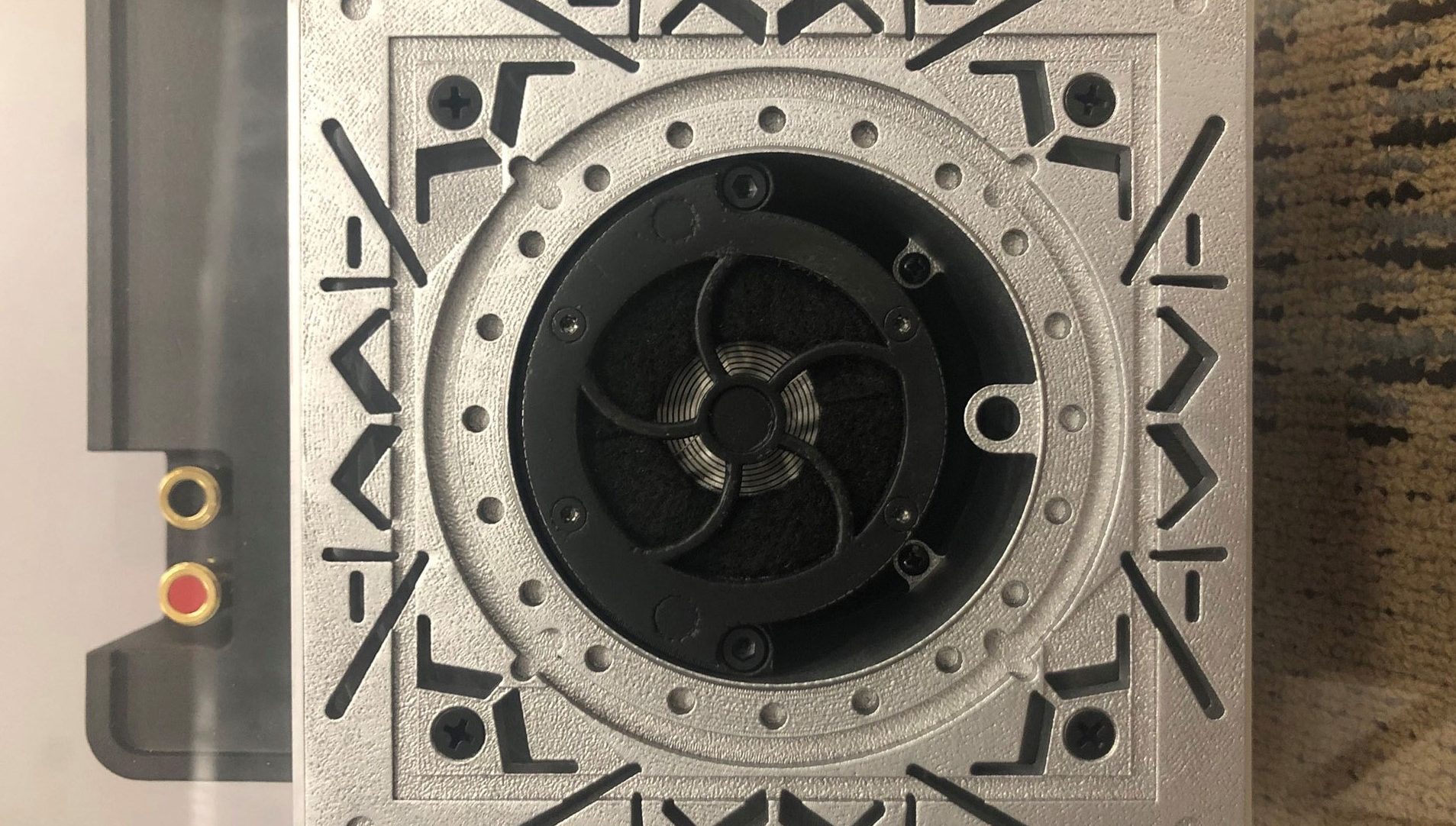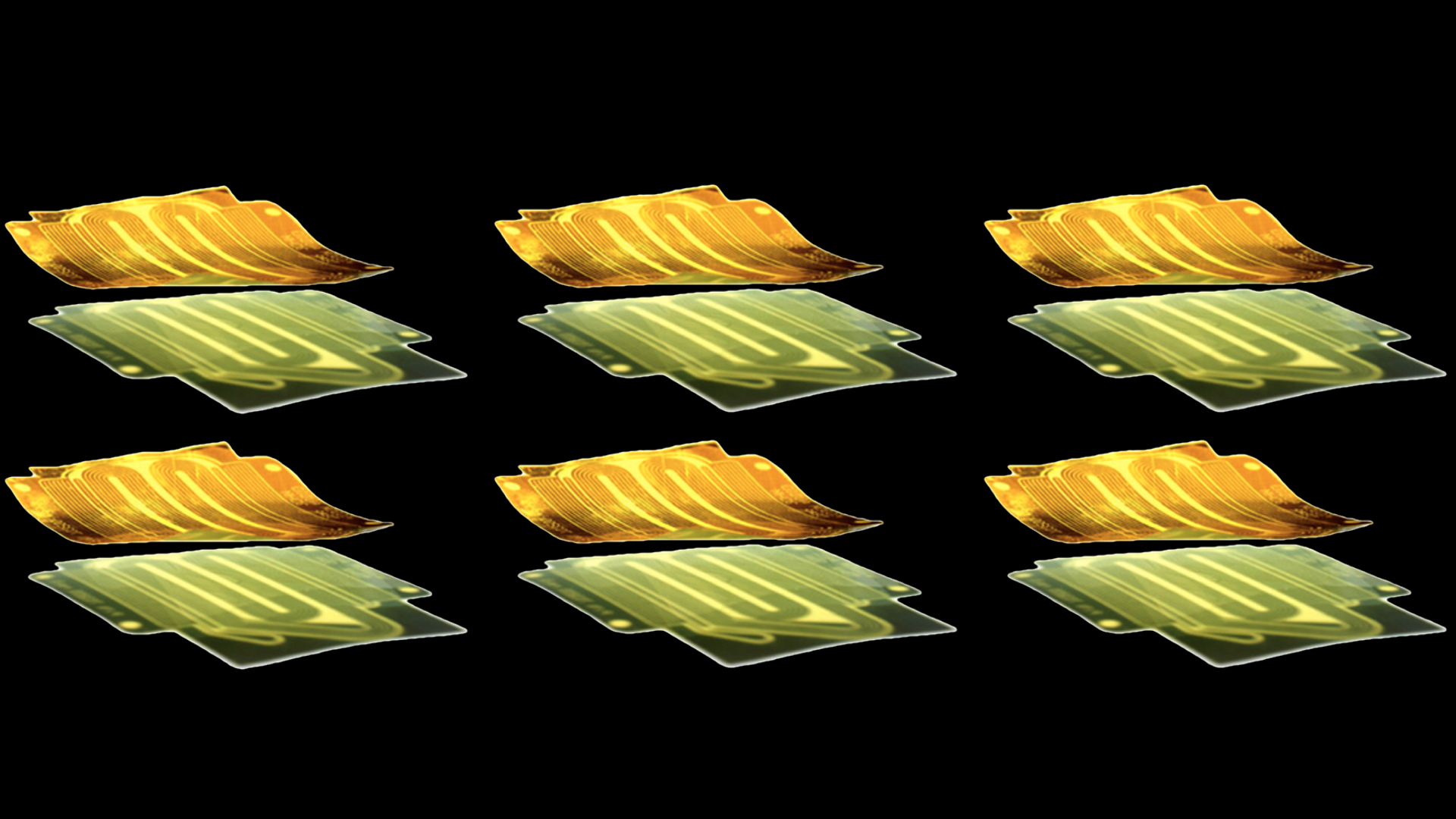
LINE SOURCE TECHNOLOGY
A Quick Note
First, we should be very clear that Wisdom Audio has nothing against point source speakers. In fact, we offer several of them ourselves. Most speakers in this world are point sources, whose sound expands away from the speaker as an ever-enlarging sphere. Line sources work differently, which we will explain below.
It is also worth mentioning that the technology behind the design of a specific driver does not dictate whether it is a line source or point source. Think of it this way: the driver technology (cone/dome, horn, planar magnetic, etc.) is responsible for making the sound, while the way that sound is delivered into space is determined by whether it is a point source or line source.
Check out our video on Line Source vs Point Source technology here!
How Point Source Works
How Line Source Works
When you have a line source (especially if it is mounted in or on the wall, eliminating the reflection from behind the speaker), things get much simpler.
Because the driver is extremely tall and narrow, the sound radiates outward in an expanding cylinder, as though from a line in space. Thus the sound is spread widely through the room from side to side, but not vertically. In fact, because the sound is concentrated where your ears are, it does not “thin out” nearly as fast, and you have surprisingly uniform SPL throughout the listening space. People sitting near the speakers and far away hear pretty much the same volume. This fact alone opens up the “sweet spot” significantly, since you no longer have to be on the center line between the speakers to hear them at the same volume.
The sweet spot gets even bigger because there are many fewer reflections confusing your ears. All those ceiling and floor reflections essentially disappear from about 530 Hz up. This range of frequencies include almost all the information our brains use to determine spatial cues (imaging, depth, a sense of space, etc.)

Since true line source arrays effectively eliminate floor and ceiling reflections, they are especially valuable for large rooms or those with architectural challenges including cathedral or coffered ceilings, hard floors, etc. But their singular benefit is heard in any room: you hear more of the speaker and less of the room. Everything is significantly clearer.
Advantages of Line Source
Unified Sound
It is rather uncanny, but line sources do not seem to get much louder as you get closer to them.
Most speakers in this world are point sources, whose sound expands away from the speaker as an ever-enlarging sphere. The reason for this is that the vibrating diaphragm is small compared to the sound waves it is producing. The sound spreads out like ripples from a pebble thrown into a pond, except in three dimensions. When the vibrating diaphragm approaches the size of the sound wave it is producing, the sound becomes more directional, moving away from the speaker like a spotlight instead of a floodlight.
When you have an extremely tall and narrow driver like those in our tallest speakers, the sound radiates outward in a cylindrical fashion. This is because the width of the diaphragm is small compared to the sound waves (wide dispersion), while the height of the diaphragm is large (resulting in controlled directivity in the vertical plane). Because more of the sound is being focused where your ears are (somewhere in the horizontal plane of the speaker, not up on the ceiling or down on the floor), the difference in volume as you move away from the speaker is significantly less. In technical terms, it falls off in a linear way rather than as the square of the distance.
In more common language, the perceived volume is quite uniform throughout the listening area. This is a big advantage when entertaining, since even in a large room you can set a single volume that supports conversation for all… even those close to the speakers.
Less Propagation Loss
Now, let’s talk briefly about how speakers deliver sound into any room.
Line sources suffer from half as much “propagation loss” as point sources, regardless of whether these point source speakers are horns or domes. This means that at a reasonable listening distance of 4 meters (slightly over 13 feet), a line source will be only 6 dB down in volume from their 1m SPL (Sound Pressure Level). By contrast, the point source will be 12 dB down.
So, to make a fair comparison of 1m sensitivities at this reasonable listening distance, you need to add 6 dB to the line source’s measurement. As an example, the 95 dB SPL 1m sensitivity of the Sage Series L75 line source is equivalent to having 101 dB SPL in a “normal” point source speaker.
| Equivalent 4m Sensitivity | ||
|---|---|---|
| Listening Distance in m | 1 | 4 |
| Point Source db SPL 1w | 101 | 89 |
| Line Source db SPL 1w | 95 | 89 |
Uniform Sound Pressure Level
Let’s take a look at the SPL requirements often considered when designing large theaters or listening rooms.
This chart shows the same speakers, but with the equivalent of 400 watts (26 dBW). This yields 115 dB at the listening area 4 meters back from the speakers, but notice that people who are closer to the speakers are less likely to damage their hearing in the case of the line sources.
| Need High SPL? | ||
|---|---|---|
| Listening Distance in m | 1 | 4 |
| Point Source db SPL 400w | 127 | 115 |
| Line Source db SPL 400w | 121 | 115 |
More uniform SPL throughout the listening area is hugely beneficial, at any volume. Imagine a cocktail party where the host can set a single volume for the entire room, without getting in the way of conversation.
In summary, because line sources are able to more efficiently deliver sound into a space, the desired intelligibility and volume level are easily achieved with less strain from the electronics in the system. In applications where high SPL is required, line sources are able to deliver the results at real world listening distances, without having to live with the earsplitting (and potentially damaging in terms of your hearing) volumes associated with close proximity to horn-loaded point source speakers often used in these installations.
Why are Line Sources so Tall?
In a typical home environment, a true line source must be on the order of five to six feet tall (or more). While this setup isn’t for everyone, the result is a level of realism that few people have experienced. It is genuinely like “being there,” whether that means attending a great concert or feeling as though you are there in the action of your favorite movie or TV show. Both musical detail and dialog intelligibility are significantly improved, and you can expect more consistent results since the nature of the way the speaker radiates sound into the room allows you to hear more of the speaker itself, and less of the room.
Surrounds and Center Channels
From reading the above information, you have probably been assuming that all of these line source advantages mainly benefit the left and right speakers. While that is true, where does that leave the center channel and surround speakers?
If you think about everything discussed above, you will quickly (and correctly) come to the conclusion that these same benefits play vital roles with the other channels of your speaker system, as well. In review, each of the speakers in your system would benefit from:
Superior Intelligibility— (vocals and instruments seem realistically and effortlessly revealed)
A Sense of Realism— (it feels more like you are “there” listening to the live event)
Propagation— (efficient delivery of sound into the room with more uniform coverage, and less volume required)
More “Direct” Sound— (fewer reflections to have to treat or listen to in your room, especially if you live with hard flooring, such as hardwood, marble, etc.)
Prior to the launch of our Hybrid Line Source (HLS), and the Line Source Array Center Channels, line sources could not be mounted horizontally, as they required vertical positioning to deliver these results. However, after ten plus years of hard work we have cracked the code and now can offer horizontal solutions for large LED video displays. For installations using acoustically transparent projection screens, one of Wisdom Audio’s line source models can serve as the ultimate center channel and fit vertically behind the screen. These new screen materials provide rich visual detail while also keeping the center speaker (and sometimes the front L&R too) hidden from the audiences’ view. Marrying the concept of superior audio and video solutions, the screen materials’ design allows for unsurpassed audio quality from the hidden speakers while maintaining high-end video performance.
You Can Mix It Up
If the scope of your installation is such that you are not able to use Wisdom Audio line sources for every channel, rest assured that you can use our point source speakers where necessary and enjoy excellent results. As all our models benefit from the use of our planar magnetic drivers (PMDs), they are incredibly detailed and dynamic, and do not suffer from the sonic compression that plagues many conventional loudspeaker designs. Whether your Wisdom Audio system uses all line sources, or none at all, you will be thrilled with its ability to transport you into the recording.








